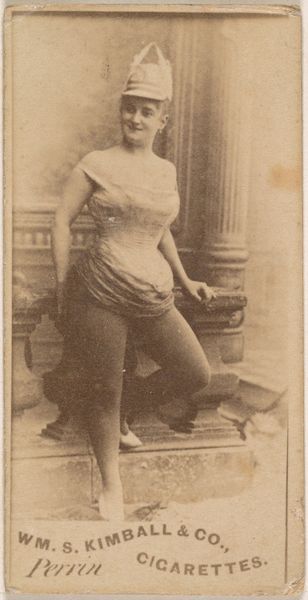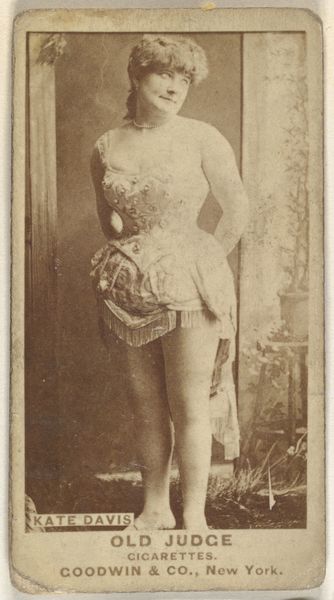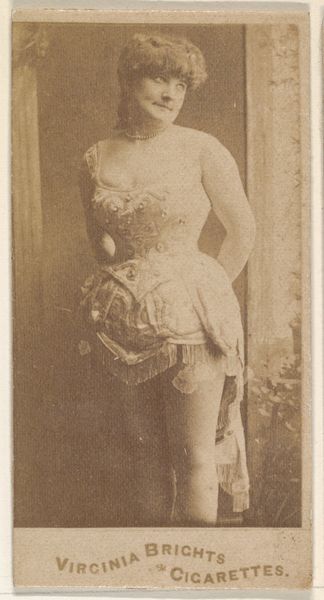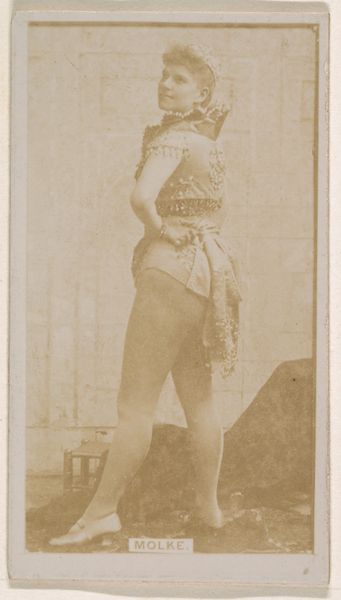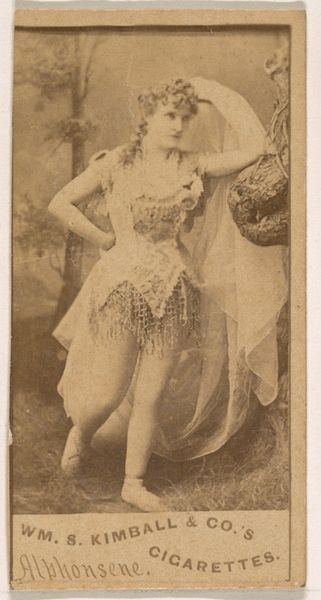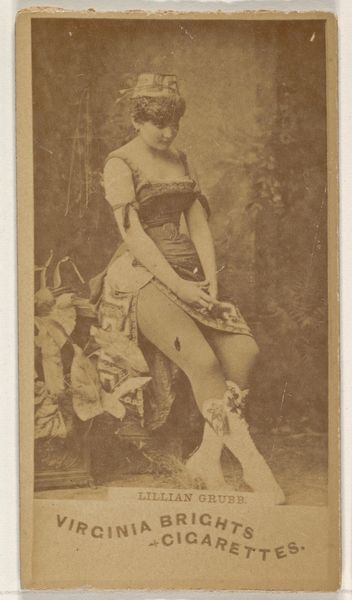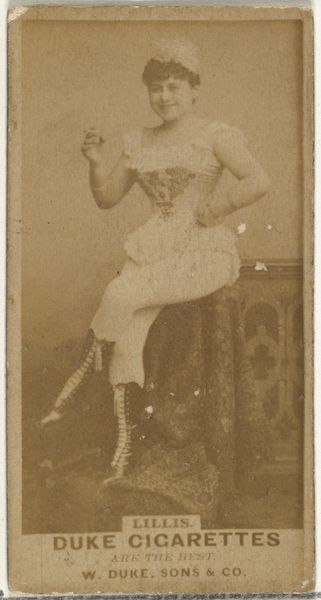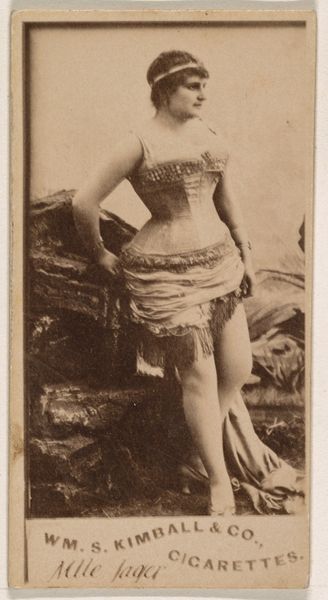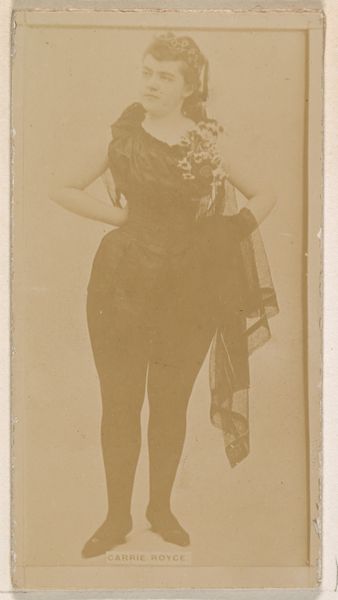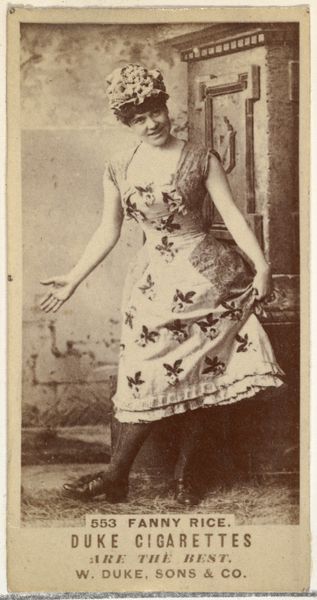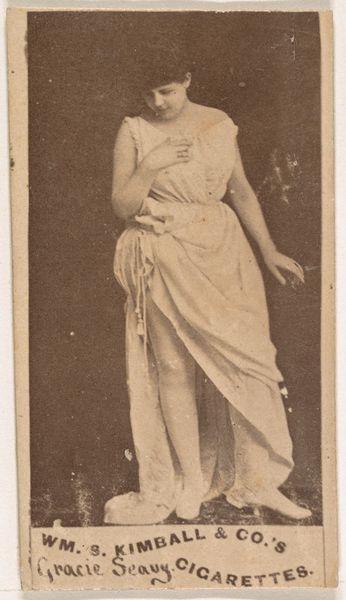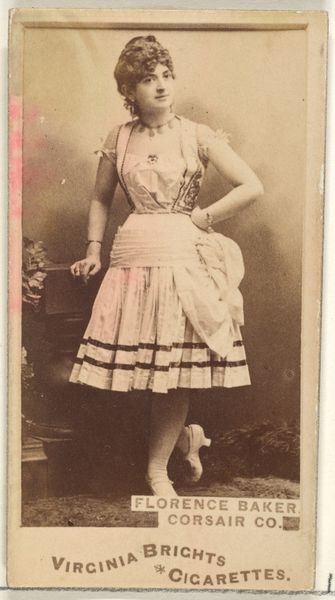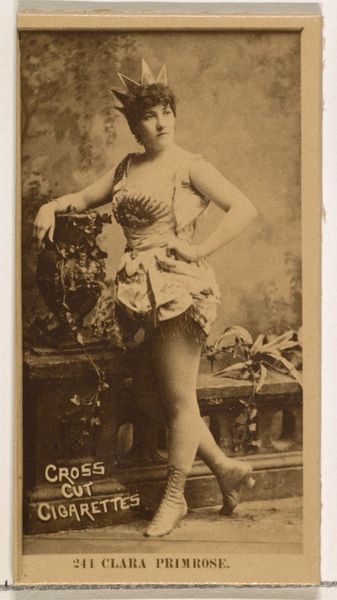
From the Actors and Actresses series (N45, Type 5) for Virginia Brights Cigarettes 1885 - 1891
0:00
0:00
drawing, print, photography
#
portrait
#
drawing
# print
#
photography
#
19th century
#
genre-painting
#
erotic-art
Dimensions: Sheet: 2 3/4 x 1 3/8 in. (7 x 3.5 cm)
Copyright: Public Domain
Curator: Allen & Ginter's "From the Actors and Actresses series (N45, Type 5) for Virginia Brights Cigarettes," created sometime between 1885 and 1891. What strikes you most about it? Editor: Immediately, the figure's contrapposto pose stands out. The delicate lace collar, juxtaposed against the high boots and abbreviated skirt—a fascinating interplay of textures and lines in such a compact format. Curator: Absolutely. Think about the commodification of femininity inherent in this piece, published as a trade card in cigarette packs. The portrait simultaneously promotes a brand and a certain ideal, manufactured image of women for male consumption. How does this commercial context intersect with constructions of female identity in the late 19th century? Editor: The monochromatic palette creates a wonderful tonality. Note how the subtle gradations articulate her form, bringing focus to the play of light and shadow on the draped fabrics and skin. A strong balance between formal elegance and implicit eroticism through pure compositional means. Curator: Exactly. The "eroticism" plays into wider conversations about performance, both on stage and within the burgeoning public sphere. The theatricality and costuming can also be understood as potentially empowering, even as it operates within the frame of a marketing scheme designed to sell cigarettes. This work mirrors the socio-economic conditions that framed the emergence of new types of working women, like actresses. Editor: But doesn't focusing solely on this cultural baggage obscure the undeniable craft involved? This commercial print showcases the firm's sophisticated approach to photographic printmaking, and its sensitivity towards translating three-dimensional form to a two-dimensional plane. Curator: That tension between aesthetic considerations and broader socio-political frameworks is where the work becomes truly compelling, doesn’t it? It challenges us to engage both with its visual presence and its position within 19th-century society. Editor: Ultimately, this piece captures how line, light and tone contribute to an image that transcends its intended function.
Comments
No comments
Be the first to comment and join the conversation on the ultimate creative platform.
